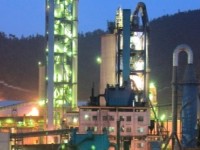Cement firms eye biodiversity, water goals after CDM disappointment
 Cement companies will look to introduce
Cement companies will look to introducegoals on water usage and biodiversity preservation, following the
disappointing outcome to a plan that would have addressed carbon
emissions, said the Cement Sustainability Initiative
(CSI).
The CSI, a collaboration of 23 cement producers under the World
Business Council for Sustainable Development, submitted a
target=”_blank” title=”CSI CDM Methodology”>proposal to the
UN’s Clean Development Mechanism (CDM) in 2009 that aimed to reward
cement producers in developing countries with carbon credits if
they reduced their emissions intensity below a certain
benchmark.
After 18 months of deliberations, the proposal was rejected by
the CDM’s Executive Board last month. The decision flies in the
face of calls to scale-up climate finance and move the CDM from its
project-by-project approach to one that uses standardised
benchmarks and
target=”_blank” title=”Sectoral feature”>addresses entire
sectors.
The Executive Board was concerned that the benchmarks were set
too low, which would make it easy for plants to earn carbon
credits, and disagreed on the measures to prevent ‘leakage’ of
carbon emissions by diverting production from one plant to
another.

Howard Klee, Cement Sustainability Initiative:
disappointed at CDM rejection
“We are disappointed,” said Howard Klee, the CSI’s Geneva-based
programme director, adding that work has now stopped on the
proposal. “We had an opportunity to propose a different benchmark
but we didn’t take it,” as it would have provided no incentive for
cement plants to implement emissions-reduction measures, he
said.
The cement industry is responsible for at least 5% of global
man-made carbon dioxide (CO2) emissions, the CSI says,
but less than 1.5% of the 3,000 registered CDM projects are in the
cement sector.
CSI members set voluntary targets for reducing emissions, but
there is obviously a limit “when it starts to become painful”, Klee
noted. Nonetheless, the industry’s most recent annual figures, for
2009, show a decrease in the emissions intensity of clinker
production, from 860 to 853 kg of CO2 per tonne of
clinker.
Biodiversity, water added to sustainability initiative
The CSI’s original remit was to improve the industry’s
sustainability by addressing greenhouse gas emissions, other
pollutants, employee safety, environmental impact assessments and
reporting.
However, biodiversity, water and land management have recently
been added to that list.
“Pretty inevitably we will start to get some data,” Klee said.
“How it gets converted into quantitative goals is not clear to me.”
The work on water and biodiversity is still at the “scoping” phase,
he said.

